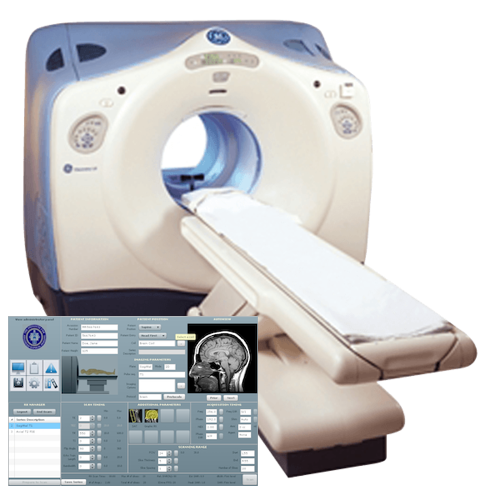|
Sulfur is called nature's "beauty mineral" because it keeps skin smooth and youthful and hair glossy. Sulfur is necessary for the production of collagen and keratin, proteins necessary for the health and maintenance of skin, nails and hair'
$14.95
|
|
Radiation Therapy for Cervical CancerRadiation therapy uses high energy x-rays or radioactive particles to kill cancer cells. Radiation therapy may be used for cervical cancer:
The two types of radiation therapy most often used to treat cervical cancer include:
External beam radiationOne way to give radiation is to aim x-rays at the cancer from outside the body. This is called external beam radiation therapy (EBRT). Treatment is much like getting a regular x-ray, but the radiation dose is stronger. Each radiation treatment lasts only a few minutes, but getting you into place for treatment usually takes longer. The procedure itself is painless. When radiation is used as the main treatment for cervical cancer, EBRT is usually combined with chemotherapy (called concurrent chemoradiation). Often, a low dose of the chemo drug called cisplatin, but other chemo drugs can be used as well. The radiation treatments are given 5 days a week for a total 6 to 7 weeks. The chemotherapy is given at scheduled times during the radiation. The schedule is determined by which drug is used. EBRT can also be used by itself to treat areas of cancer spread or as the main treatment of cervical cancer in patients who can’t tolerate chemoradiation. Possible side effects of EBRTSide effects of external beam radiation therapy for cervical cancer can include:
Skin changes: As the radiation passes through the skin to the cancer, it can damage the skin cells. This can cause irritation ranging from mild, short-term redness to peeling. The skin may release fluid, which can lead to infection, so the area exposed to radiation must be carefully cleaned and protected.
When chemotherapy is given with radiation, the blood counts tend to be lower and fatigue and nausea tend to be worse. These side effects typically improve in the weeks after treatment is stopped. Other, longer-term side effects are also possible with EBRT. These are described below. BrachytherapyBrachytherapy, or internal radiation therapy, puts a source of radiation in or near the cancer. This type of radiation only travels a short distance. The type of brachytherapy used most often to treat cervical cancer is known as intracavitary brachytherapy. The radiation source is placed in a device in the vagina (and sometimes in the cervix). This is often used in addition to EBRT as a part of the main treatment for cervical cancer. There are two types of brachytherapy:
To treat cervical cancer in women who have had a hysterectomy, the radioactive material is placed in a tube in the vagina. To treat a woman who still has a uterus, the radioactive material can be placed in a small metal tube (called a tandem) that goes in the uterus, along with small round metal holders (ovoids) placed near the cervix. This is sometimes called tandem and ovoid treatment. Another option is called tandem and ring. For this, a round holder (like a disc) is placed close to the uterus. The choice of which one to use depends on what type of brachytherapy is planned. Possible short-term side effects of brachytherapy Since the radiation only travels a short distance with brachytherapy, the main effects of the radiation are on the cervix and the walls of the vagina. The most common side effect is irritation of the vagina. It may become red and sore, and there may be a discharge. The vulva may become irritated as well. Brachytherapy can also cause many of the same side effects as EBRT, such as fatigue, diarrhea, nausea, irritation of the bladder, and low blood counts. Often brachytherapy is given right after external beam radiation (before the side effects can go away), so it can be hard to know which type of treatment is causing the side effect. Long-term side effects of radiation therapyVaginal stenosis: Both EBRT and brachytherapy can cause scar tissue to form in the vagina. The scar tissue can make the vagina narrower (called vaginal stenosis), less able to stretch, or even shorter, which can make vaginal sex painful. A woman can help prevent this problem by stretching the walls of her vagina several times a week, either by having sex or by using a vaginal dilator (a plastic or rubber tube used to stretch out the vagina). For more information, see Sex and Women With Cancer. Vaginal dryness: Vaginal dryness and painful sex can be long-term side effects from radiation (both brachytherapy and EBRT). Estrogens used locally may help with vaginal dryness and changes to the vaginal lining, especially if radiation to the pelvis damaged the ovaries, causing early menopause. These hormones are typically applied into the vagina and absorbed into the genital area, rather than taken by mouth. They come in gel, cream, ring, and tablet forms. For more information, see Sex and Women With Cancer. Weakened bones: Radiation to the pelvis can weaken the bones, leading to fractures. Hip fractures are the most common, and might occur 2 to 4 years after radiation. Bone density tests are recommended to monitor the risk of fracture. Swelling of the leg(s): If pelvic lymph nodes are treated with radiation, it can lead to fluid drainage problems in the leg. This can cause severe swelling in the leg, a condition called lymphedema. More information about lymphedema can be found in our section on Lymphedema If you are having side effects from radiation treatment, discuss them with your cancer care team. It is important to know that smoking increases the side effects from radiation and can make treatment less effective. If you smoke, you should stop. |
|
|

OPEN 24 HOURS: ACCIDENT EMERGENCY, LAB SERVICES, IMAGING SERVICES & PHARMACY










